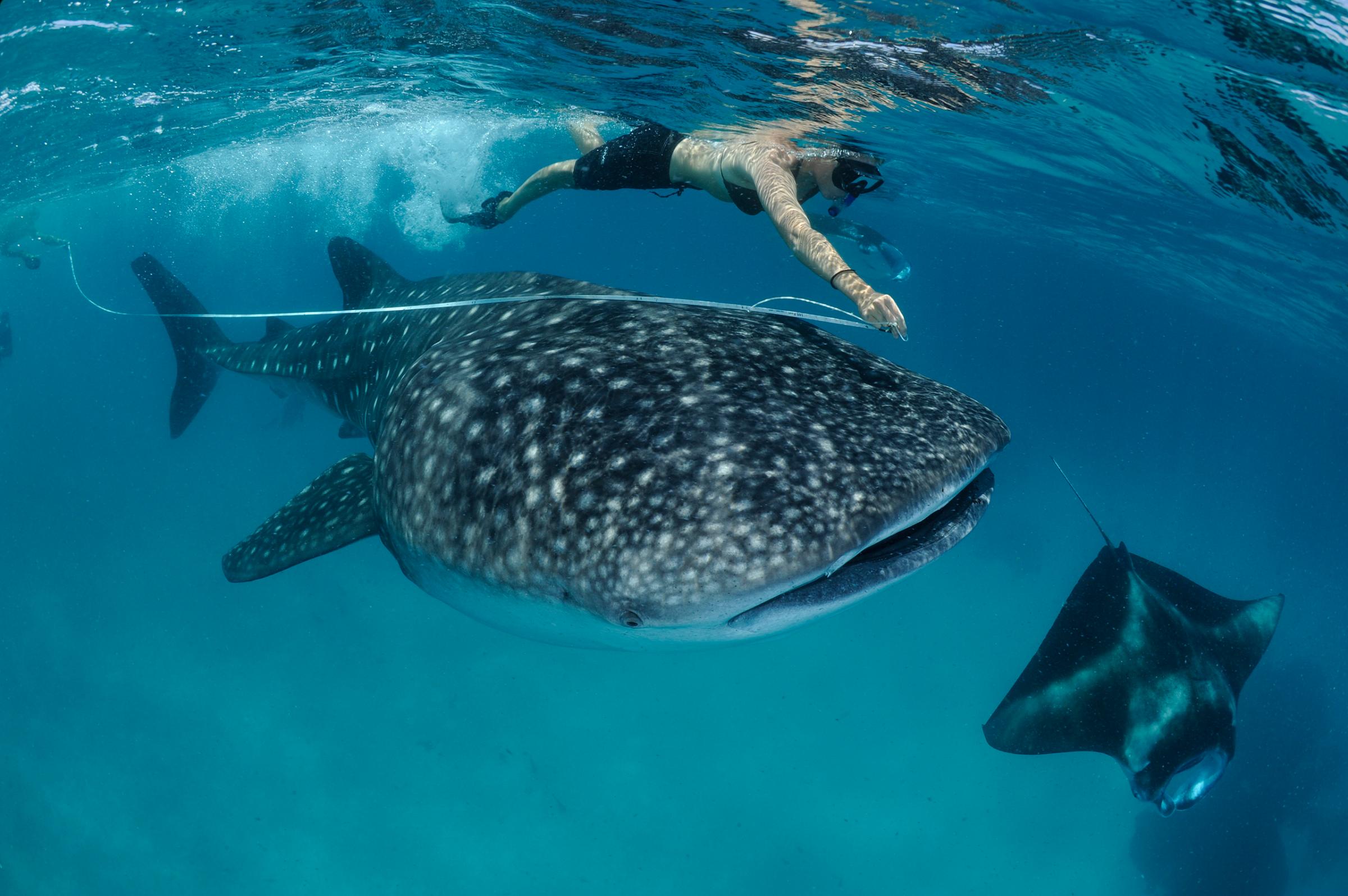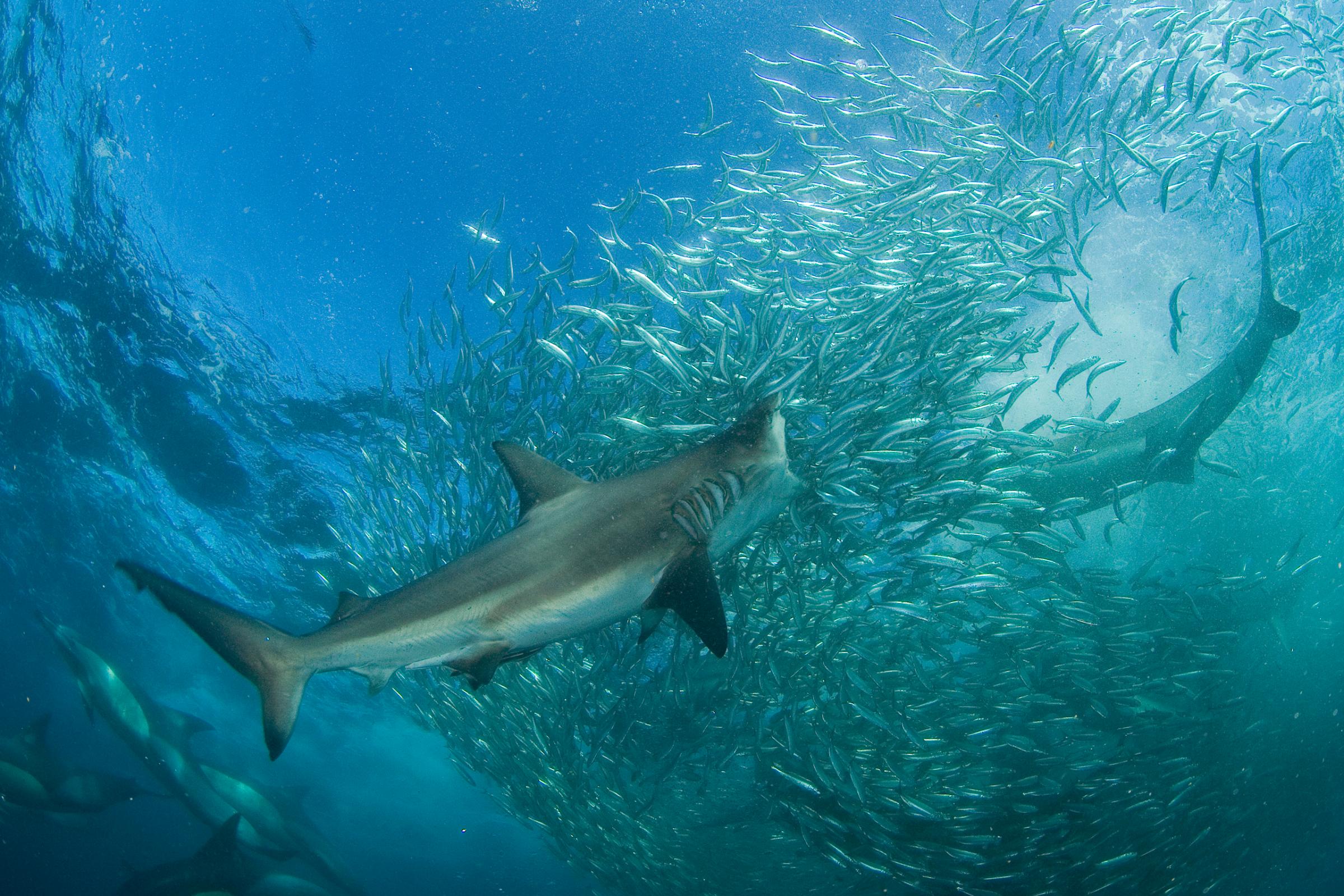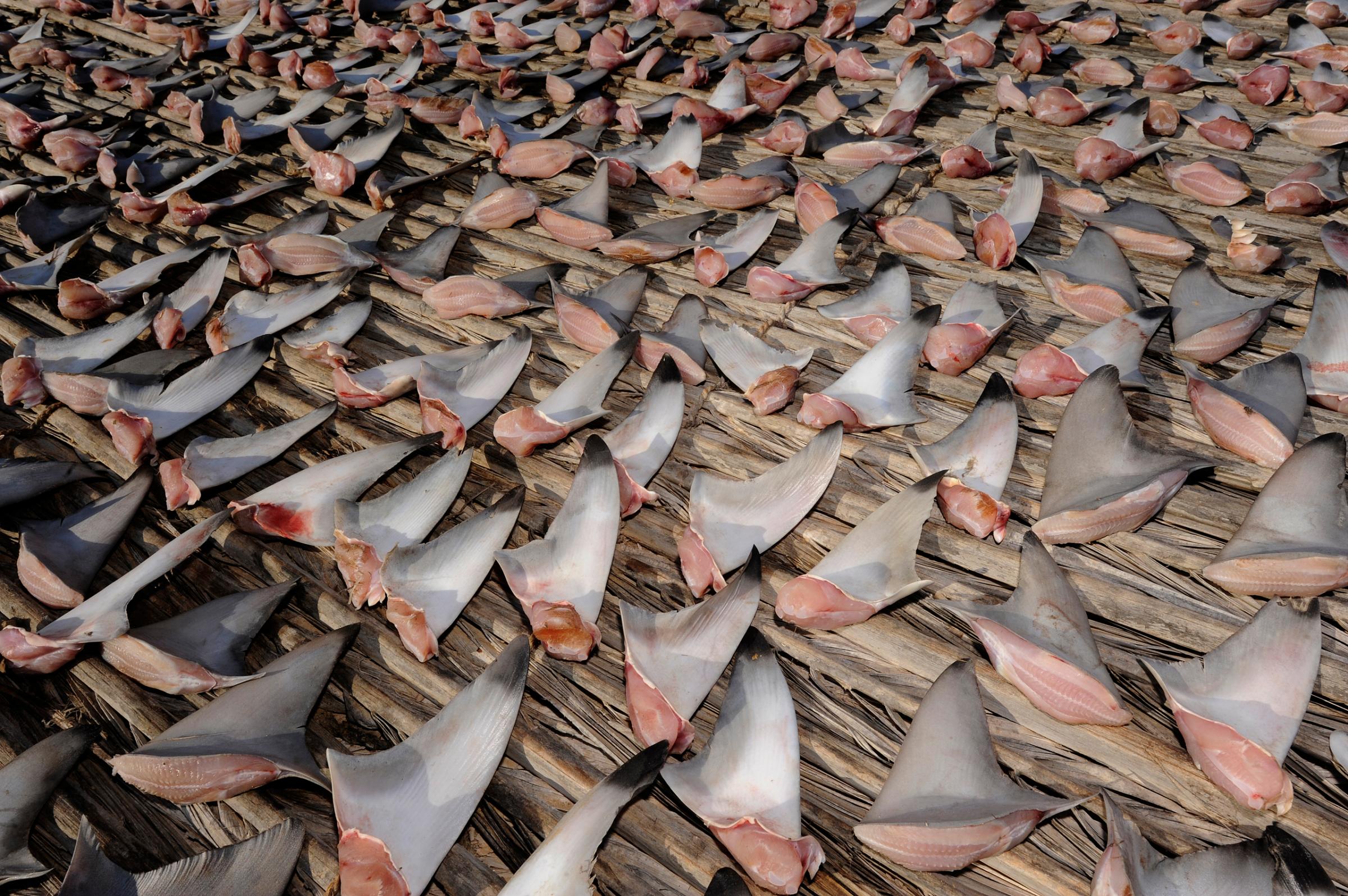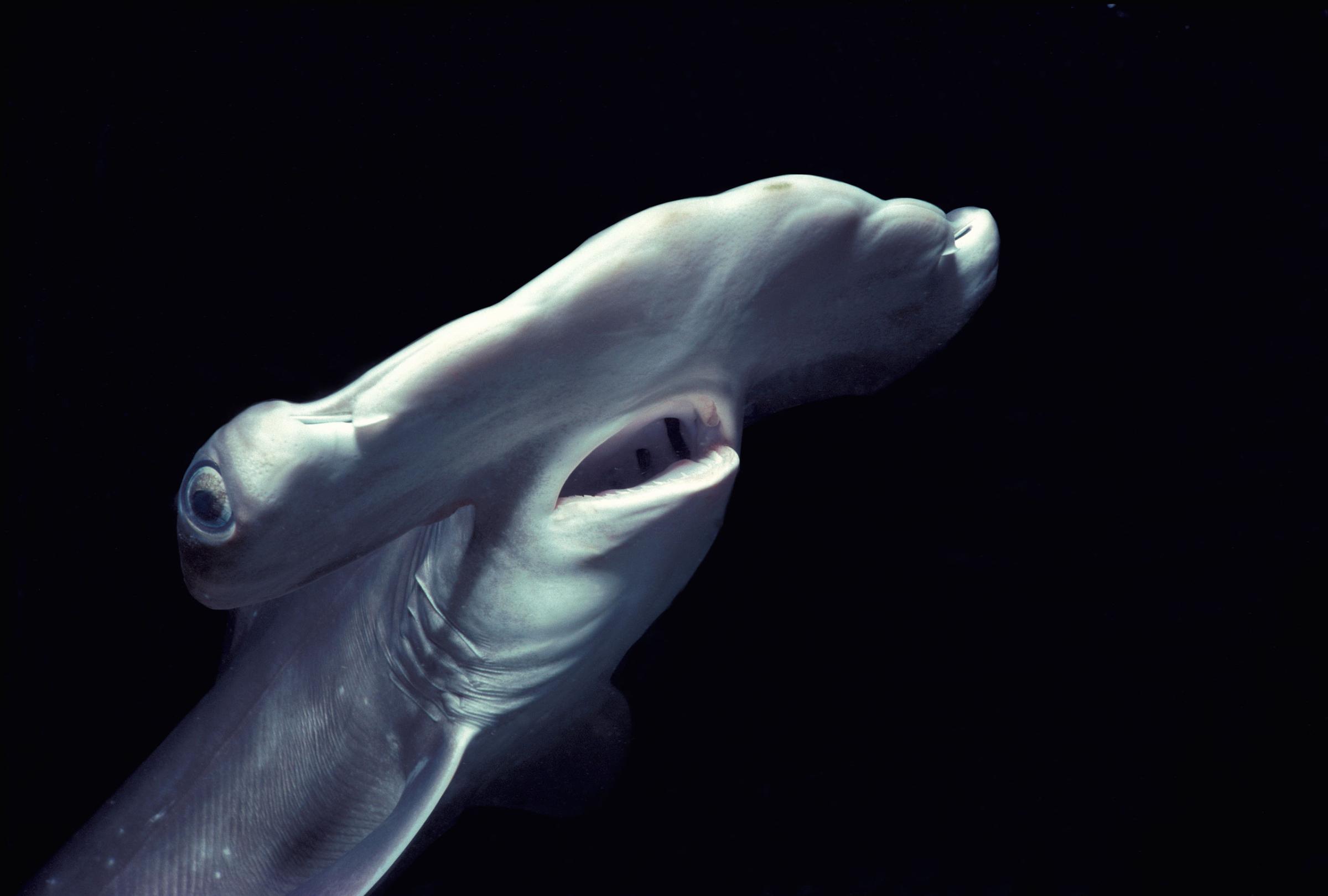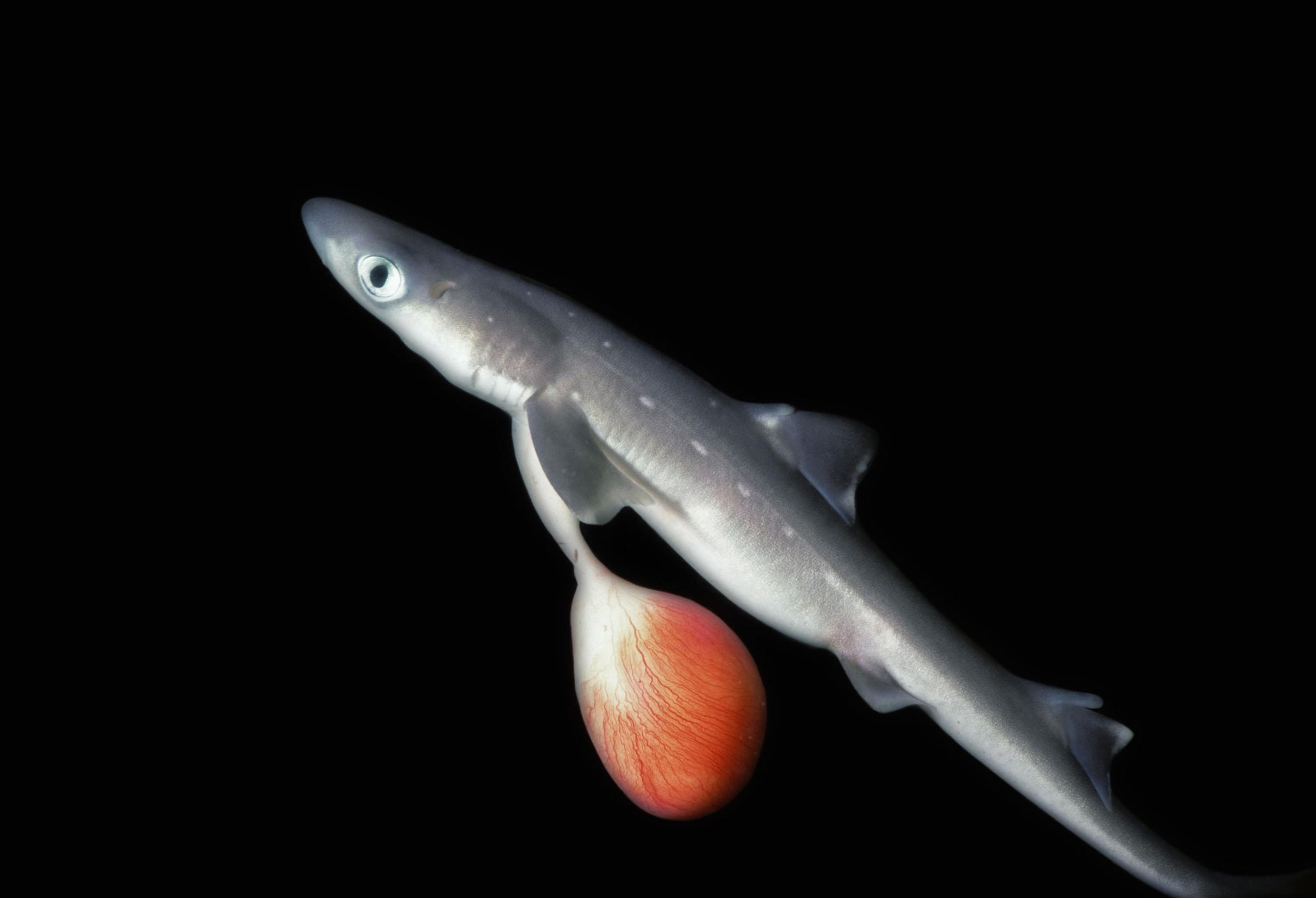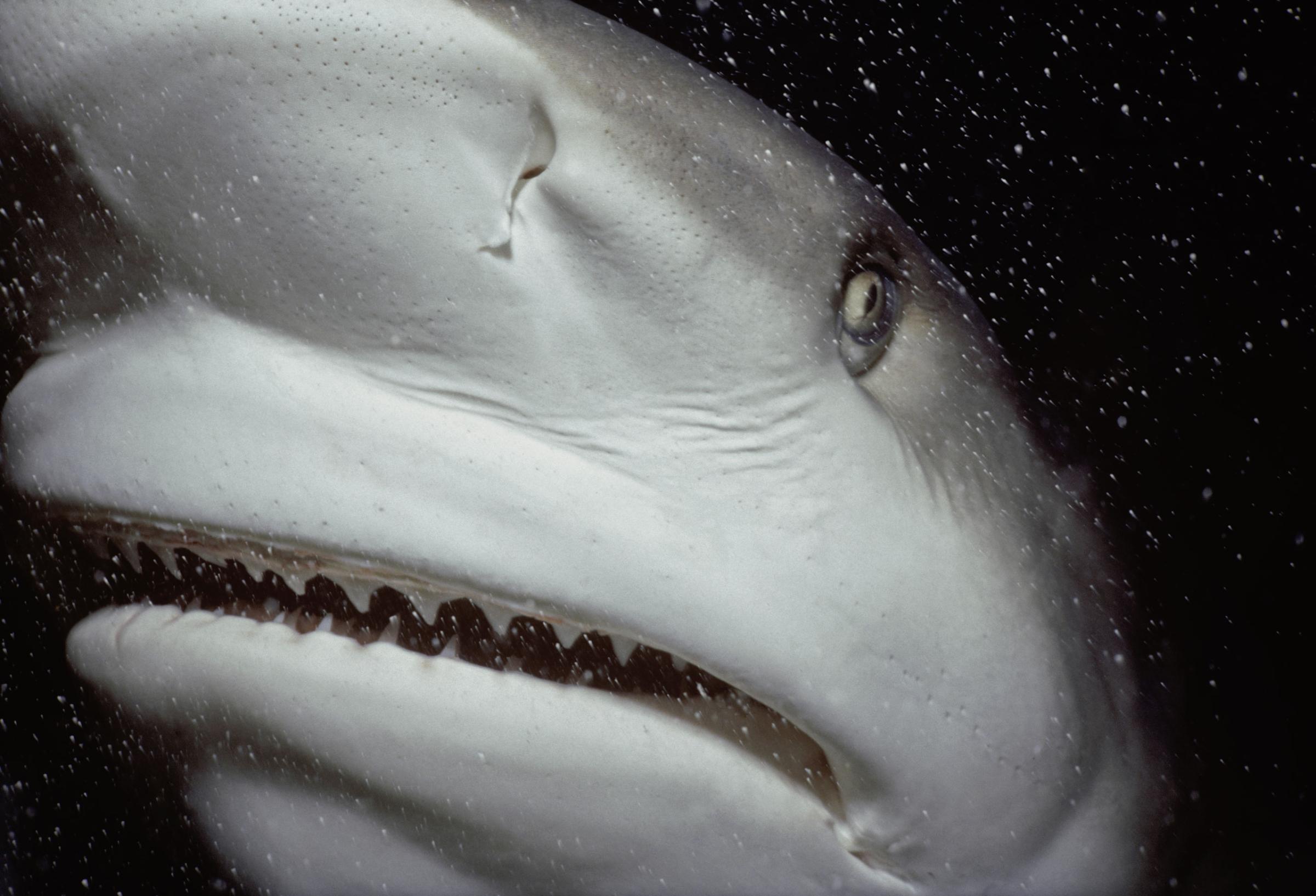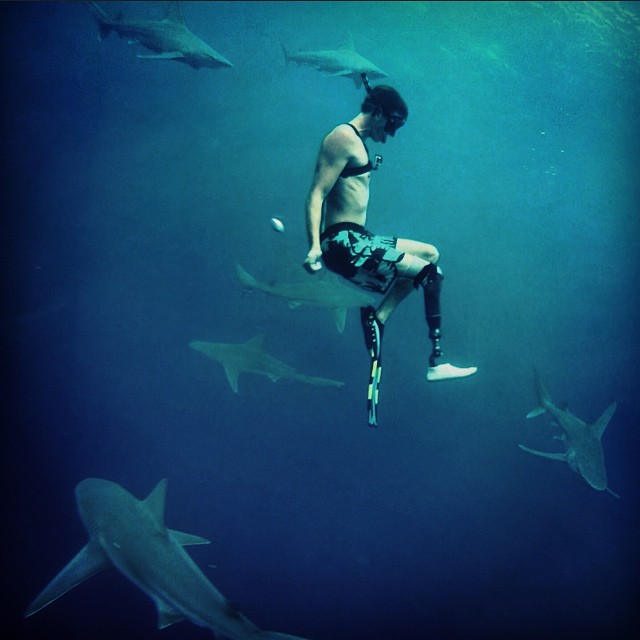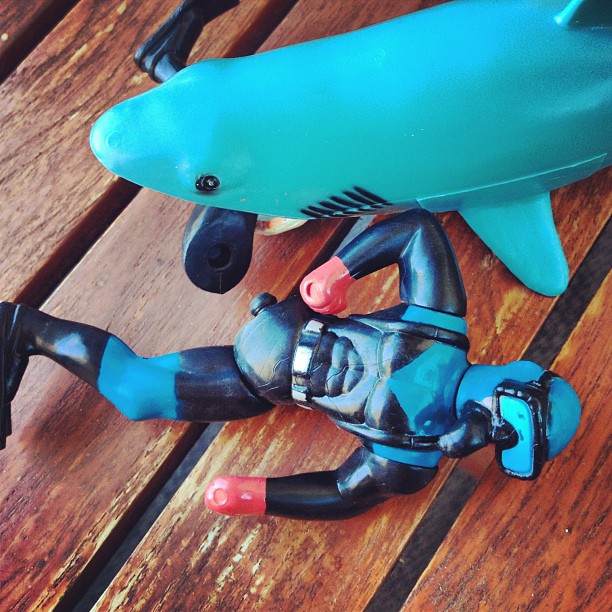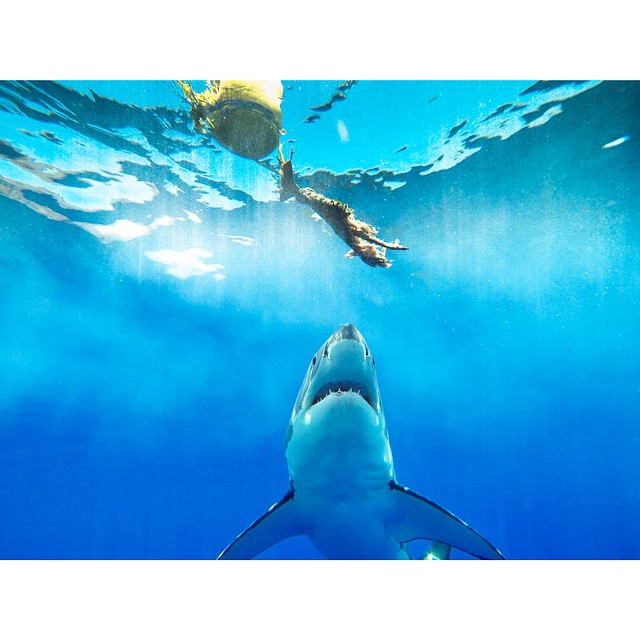July 31, 2015 2:05 AM EDT
O ne week after fighting off a shark during a televised surf competition in South Africa, surfer Mick Fanning returned to his home in New South Wales, Australia to brave the waves for the first time since the attack.
Filming his return to the water at Hastings Point on the Tweed Coast Saturday was 60 Minutes Australia , and in a trailer for Sunday’s upcoming show, it appears that Fanning had another shark encounter, Aussie newspaper the Courier-Mail reports .
The trailer shows the three-time world champion hugging his mom Liz before hitting the waves, then jumps to Fanning clambering onto a jet ski after spotting another shark.
“There he is,” says Fanning pointing to the ocean and telling a reporter he has seen a shark. “Straight out, I just saw it.”
[Courier-Mail
Three Shark Photographers You Need to Follow The water column is a three-dimensional habitat for sharks. Instead of traveling horizontally across the ocean, many species, like blacktip sharks, bounce up and down, repeatedly descending and ascending through the water column, in hopes of picking up any signs of prey. Aliwal Shoal, South Africa. Thomas P. Peschak A Red Sea Silky Shark.
To survive in the vastness of the open ocean, Silky sharks rely on their boldness and curiosity to investigate every opportunity that might yield a meal. Sharks make up for their lack of hands to investigate things, with thousands of tiny pores, called the Ampullae of Lorenzini, which line the shark’s snout. Northern Red Sea. Thomas P. Peschak The whale shark is the world’s largest fish, born with unique spotted skin patterns, which don’t change significantly as the animal ages. Scientists are using the latest in space technology developed by NASA, for fingerprinting and identifying whale sharks based on their spots. In this image scientists from the conservation NGO Manta Trust are measuring a sub-adult whale shark in Baa Atoll, Maldives. Thomas P. Peschak Bronze Whaler sharks are the most abundant sharks during the sardine run off South Africa’s east coast every June/July. Hundreds of them patrol the margins of baitballs and charge into the seething mass of fish singly or in small groups to feed. Thomas P. Peschak Shark fins are the key ingredient of shark fin a soup, a dish frequenlty consumed at weddings and banquets in China. It is primarily served to demonstrate wealth and honor guests. Thomas P. Peschak Head and gills of Juvenile Scalloped Hammerhead Shark (Sphyrna Lewini), Kane'ohe Bay, Hawaii - Pacific Ocean. Jeff Rotman Close-up of Spiny Dogfish Shark (Squalus acanthias) born prematurely with egg sac attached. New England, North Atlantic Jeff Rotman Gills of a Lemon Shark at night. Jeff Rotman Eye of Whitetip Reef Shark (Triaenodon obesus), Cocos Island, Costa Rica - Pacific Ocean. Jeff Rotman Caribbean Reef Shark (Carcharhinus perezi). Bahamas, Caribbean Sea. Jeff Rotman An image of Mike Coots taken by his friend Juan Oliphant as they are swimming surrounded by sharks. ©JuanOliphant/@Juansharks Mike Coots “hangs out” with a great white. As he is frequently asked if he is afraid to go back to the water after the attack, Coots has no doubt: “I am positive I was attacked as mistaken identity and the last couple of days [swimming with the sharks] really reiterated the point. Humans are not sharks' prey.” Mike Coots While babysitting his 6-year-old nephew, the little boy showed the toys to Coots. "It's you uncle Mike," he said. Mike Coots Coots has been able to return to surf after the shark attack, wearing a prosthesis for his right leg. Coots was just a teenager when a tiger shark attacked him in the deep water of Kauai, an area known to be populated by sharks. Mike Coots Coots took this photograph with Hero3, a waterproof camera. He observed the white shark being hesitant before eating its meal. “Incredibly beautiful to watch and I never felt threatened once. Completely serene,” Coots wrote on his Instagram feed. Mike Coots More Must-Reads from TIME Donald Trump Is TIME's 2024 Person of the Year Why We Chose Trump as Person of the Year Is Intermittent Fasting Good or Bad for You? The 100 Must-Read Books of 2024 The 20 Best Christmas TV Episodes Column: If Optimism Feels Ridiculous Now, Try Hope The Future of Climate Action Is Trade Policy Merle Bombardieri Is Helping People Make the Baby Decision 

